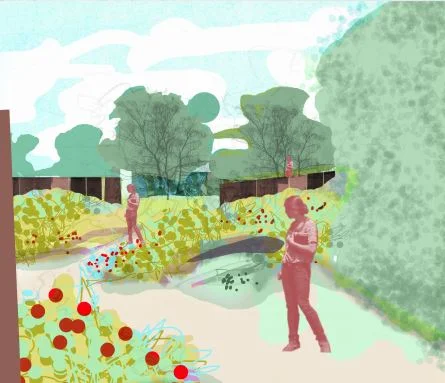Growing through Cracks in the Real Estate Market
Similar to the community gardens founded in the 70's and 80's that “took back” abandoned and blighted land, this garden reclaims a landscape that would otherwise be developed into housing that maximizes profit at the expense of the context of the neighborhood. The location of this garden is, by default, a statement against the excess development of the area during the housing boom. Taking advantage of a dip in development, stalled projects and ruins created by the lack of financing, the site is reclaimed from a new type of abandonment. It creates a greater diversity of land use in the neighborhood.
The project is an expression of landscape as a constructed environment, the creation of a ascending landscape in a flat area. By reconstructing an arable, occupied ground plane, the site can be formed by a vision that balances the goals and program with a sense of delight. The core of the design is the spatial experience, the scale of its functional spaces, and a heightened interaction with plant-life. The spatial and sensory experiences are emphasized. An unfolding path allows dynamic change through the seasons and new discoveries with each visit, involving the plants as active participants in the experience. Carefully chosen planting schemes choreograph the sensory qualities of the flora and create events over daily and seasonal time frames. By doing this, the garden will have a heightened, even exaggerated, sense of constant change.


